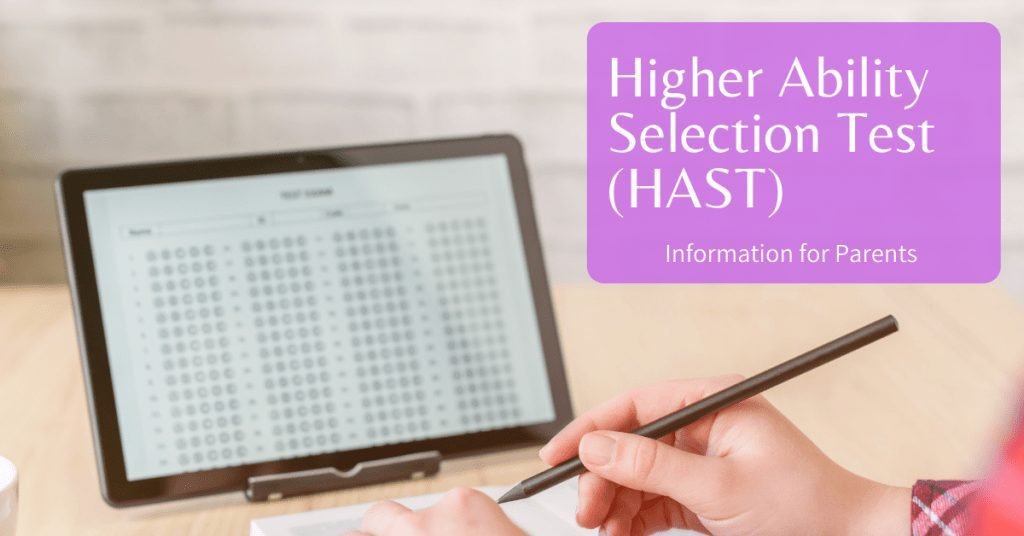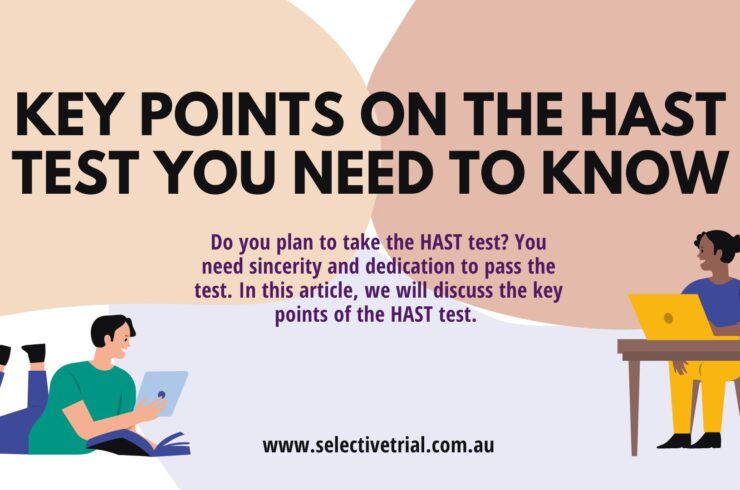The HAST is a capability test program by the Australian Council for Educational Research (ACER). HAST is considered to identify academically talented and top rank children who would get assistance from enhanced learning programs like Selective High Schools in New South Wales, the Explode program in South Australia, and the Queensland Academies Student Entrance Exam.
.
The HAST test contains a series of challenging questions around reading comprehension, mathematical reasoning, abstract reasoning and written expression at all levels of secondary school and first-level entry.

HAST is intended to measure inborn capability and academic potential contrasting curriculum-based exams, which naturally find what a learner has already learned.
The test material is offered in a wide range of situations. It contains some verbal items, some require the ability to observe concepts at an intellectual level, others that need the capability to synthesise, extrapolate or make inferences, and some that apply sound and planned thinking to solve a problem.
So to perform well, you need to prepare well before you appear for the Test. Taking more and more Mock tests is good for this kind of Test.
During HAST test
• Be careful with instructions.
• Read the advice on the front cover of each Test carefully.
•Read each test question carefully before answering it.
• Make sure you mark all of your answers on the answer sheet and not in the test booklet.
•Check that the answer you are marking matches the question number in your test booklet.
• Do not hurry.
• If you find one question too difficult, do not spend a long time on it. Leave it out but be sure you place your following answer in its right circle. Each question is of equal value.
• If you cannot decide between two answers in the multiple-choice tests, mark the letter of the answer you think is most likely correct. You may have time to go back to that question, but in the meantime, you have done the best you can. No marks will be deducted for incorrect answers.
• Take time to read the question sensibly. Enquire the teacher in charge if you are unclear about anything in the Test.
You will be provided with a special answer page for the MCQ tests in Reading Understanding, Mathematical Reasoning and Abstract Reasoning, and a lined newspaper for the Writing test. There are four small circles categorised A, B, C, and D for each query on the MCQ answer sheet. Use HB or B pencil to colour in the circle of your choice.
There will be three or four discrete tests, dependent on what set your school selects. The time permissible for each and the order in which they will be taken are (1) Reading Comprehension > 30 Minutes (2) Mathematical Reasoning > 30 Minutes (3) Writing Test> 30 Minutes and an optional test your school may choose: 4 Abstract Reasoning > 30 Minutes.
- Reading Comprehension Test: This Test deals with how well you can recognise and understand ideas in language. The Test asks you to look at written and pictorial material and answer questions on it. Overall, there will be 25 multiple-choice questions in this Test.
- Mathematical Reasoning Test: This test challenges measuring mathematical ability, indifference to a test of school achievement in mathematics. Consequently, the material used for the questions in this Test is selected from a wide variety of sources and may differ from standard school-based curriculum materials. The Test consists of 25 multiple-choice questions.
- Writing Test: This Test is all about your ability to prompt your thoughts and state of mind in writing. You will be given an image that will be the basis of your writing. You should answer to the image stimulus in the way that is most exciting to you and which best reflect your ability to write and prompt yourself. You will be given three pages to write your section on. It is not expected that your story will be longer than this; however, if you have not ended your story and need more space to complete it, the added paper will be provided.
- Abstract Reasoning Test: This is a word-less and picture-based test that measures abstract reasoning skills, counting the capacity to make sense of multipart situations, to draw meaning out of events, to perceive and think clearly. The exam will enquire you to recognise and complete various picture sequences and patterns. You will ‘complete the pattern’ or identify the ‘next in sequence’. Altogether there will be 30 multiple-choice questions.




